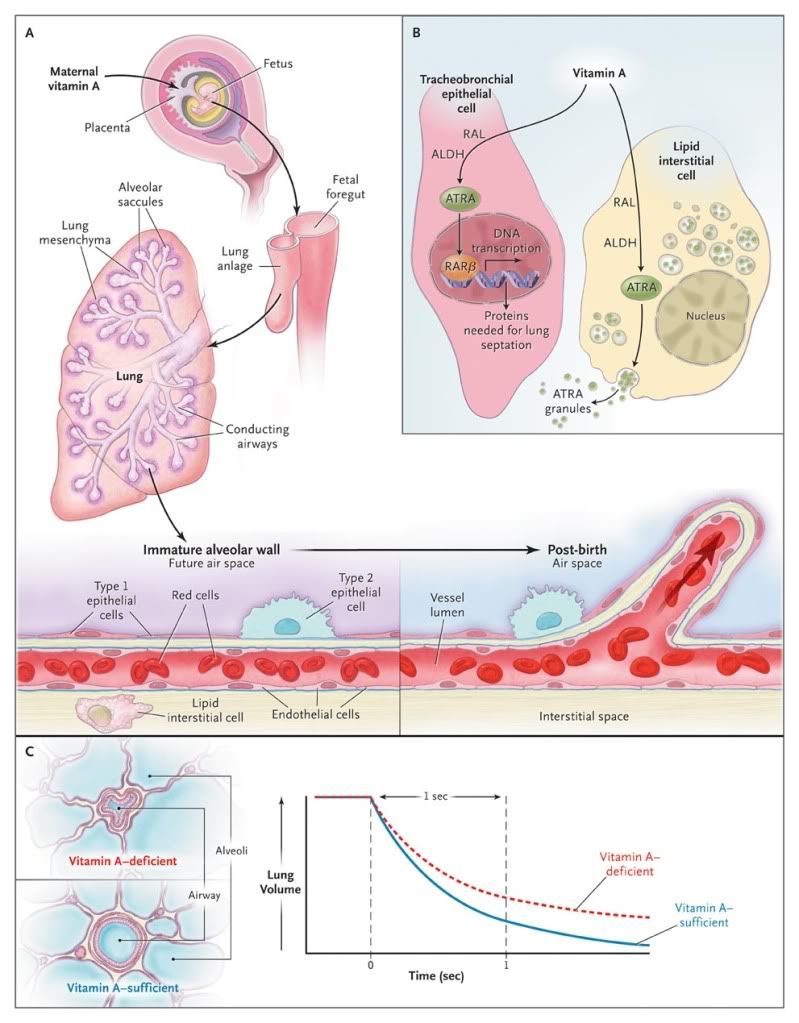Volume 362:1829-1831
Relationship of Maternal Vitamin A to Development of the Lung and to Lung Function.

Maternal vitamin A enters the fetal circulation through the placenta (Panel A). In the cytoplasm of tracheobronchial cells of the fetus, it is enzymatically converted to all-trans retinoic acid (ATRA), which can then enter the nucleus, where it is bound by retinoic acid receptor β (RARβ). RARβ carrying ATRA can then bind to the retinoic acid response element of DNA, leading to the formation of messenger RNA, which travels to the cytoplasm, where it leads to the formation of a protein critical for lung septation. In the alveolar region of the immature lung, vitamin A enters interstitial fibroblasts (which store retinol2), is enzymatically converted into ATRA, and can then be secreted into the interstitial space, from which it can enter other cells of the alveolar wall (e.g., alveolar type 1 and type 2 cells and capillary endothelial cells). In alveolar wall cells, ATRA, acting through RARγ and retinoid X receptor α (RXRα), results in the formation of alveolar septa capable of gas exchange (Panel B). In addition, in lungs with sufficient vitamin A, the alveolar attachments to airways are taut and maintain better airway patency than do lungs that are deficient in vitamin A (Panel C). This could lead to the improved airflow noted by Checkley et al.1 ALDH denotes aldehyde dehydrogenase, and RAL retinaldehyde dehydrogenase.





 留言列表
留言列表
 線上藥物查詢
線上藥物查詢 